
Next-generation waste sorting solutions for a sustainable future
Envac leads the way in innovative waste management, driving sustainability and the circular economy with advanced optical sorting solutions. Designed for cities of all sizes, this technology reduces transport and collection costs by at least 50% compared to traditional systems, making recycling more efficient and cost-effective.
The Optical Sorting system can seamlessly integrate with Envac’s smart waste collection system or a municipality’s existing infrastructure, enhancing recycling rates while optimising waste management. Using advanced cameras, sensors, and colour recognition programs, this cutting-edge system swiftly and accurately identifies and sorts waste materials, ensuring maximum resource recovery with minimal environmental impact.


Multiple waste fractions
Cut collection costs
Saves space
Multiple recyclables and collection methods - one sorting plant
Envac’s Optical Sorting system seamlessly integrates with the pneumatic waste collection system but can also be implemented to modernise traditional waste collection methods. In both cases, this market-leading solution offers a cost-effective and straightforward approach while significantly improving recycling rates.
The system operates using colour-coded bags, with each recyclable material assigned a specific colour. This simple method makes recycling accessible for everyone, even those unfamiliar with the process. Users dispose of all bags in the same waste bin or inlet, where they are transported to a sorting plant. There, the bags are automatically identified by colour and directed to their corresponding containers. By optimising waste transport, the system reduces both operational costs and carbon emissions, making waste management more efficient and environmentally friendly.
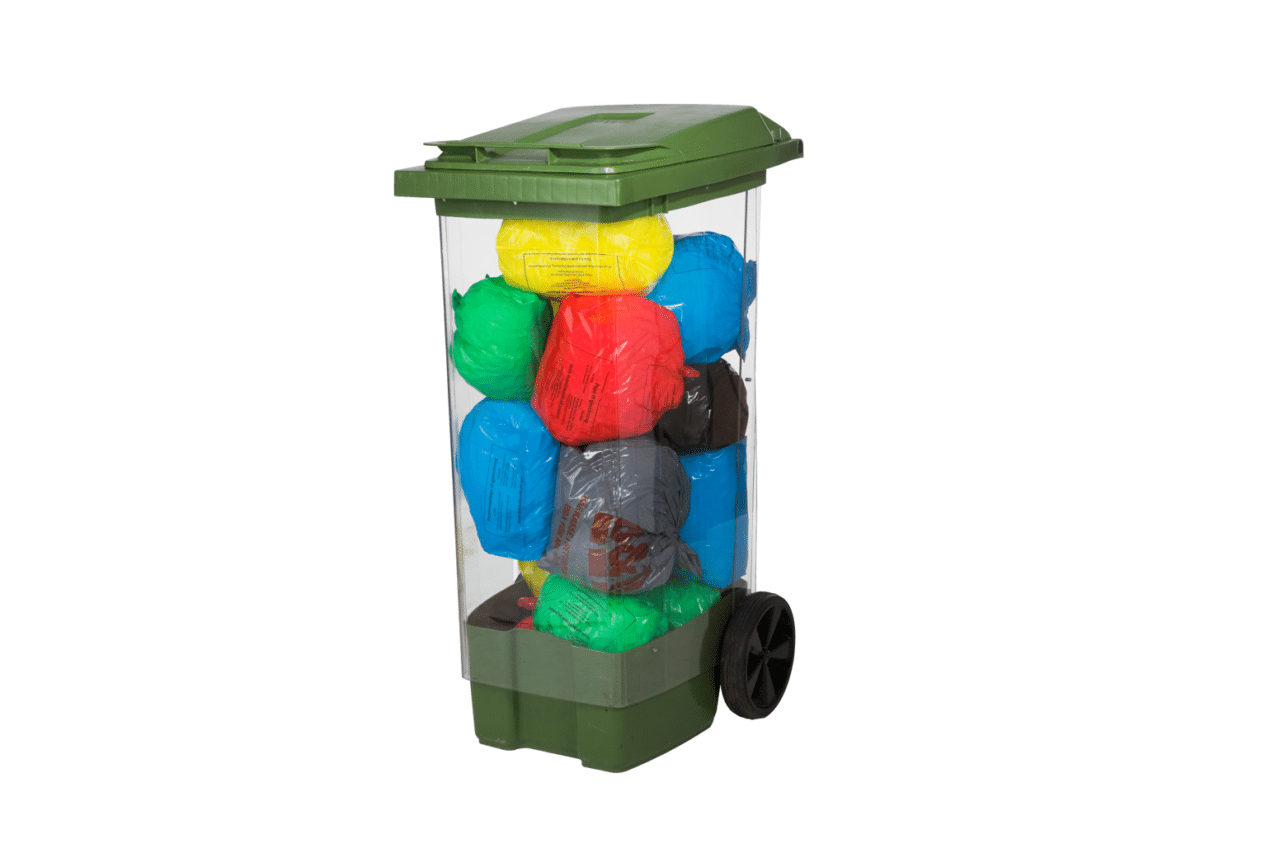
Encouraging user engagement for successful recycling
As with any waste management system, the separation of waste from recyclable materials begins at home. Engaging residents in proper sorting and recycling can be challenging, particularly when introducing a new system. Clear communication and **making the process simple and accessible** are essential for success.
With decades of experience, Envac’s local teams work closely with system owners to tailor information campaigns that encourage user participation. This approach is effective in projects like GrowSmarter at Valla Torg, Sweden, where households reduced general waste by 65% after switching to Envac’s system, replacing outdated recycling methods with a more efficient, user-friendly solution.
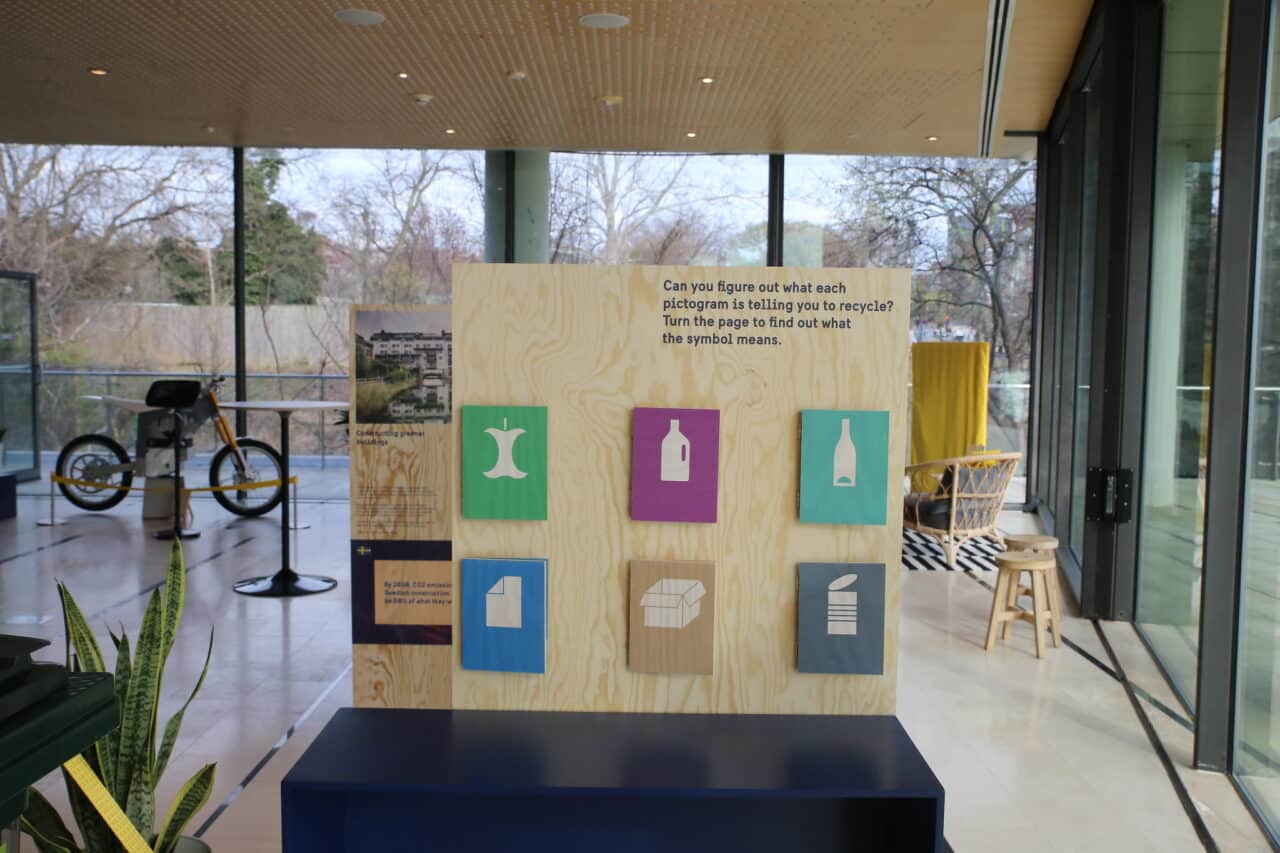
Data-driven waste sorting for a smarter circular economy
The colour-coded system facilitates efficient optical sorting at the collection station and enables advanced data collection and analysis using AI. This technology provides valuable insights into waste volumes, recycling accuracy, and disposal patterns, helping to optimise operations beyond conventional waste management systems.
AI is used to adjust system capacity, optimise collection intervals, and analyse user behaviour, allowing for targeted initiatives that encourage better recycling habits. By leveraging real-time data, the system continuously improves efficiency, making it an essential tool for advancing sustainability and supporting the circular economy.
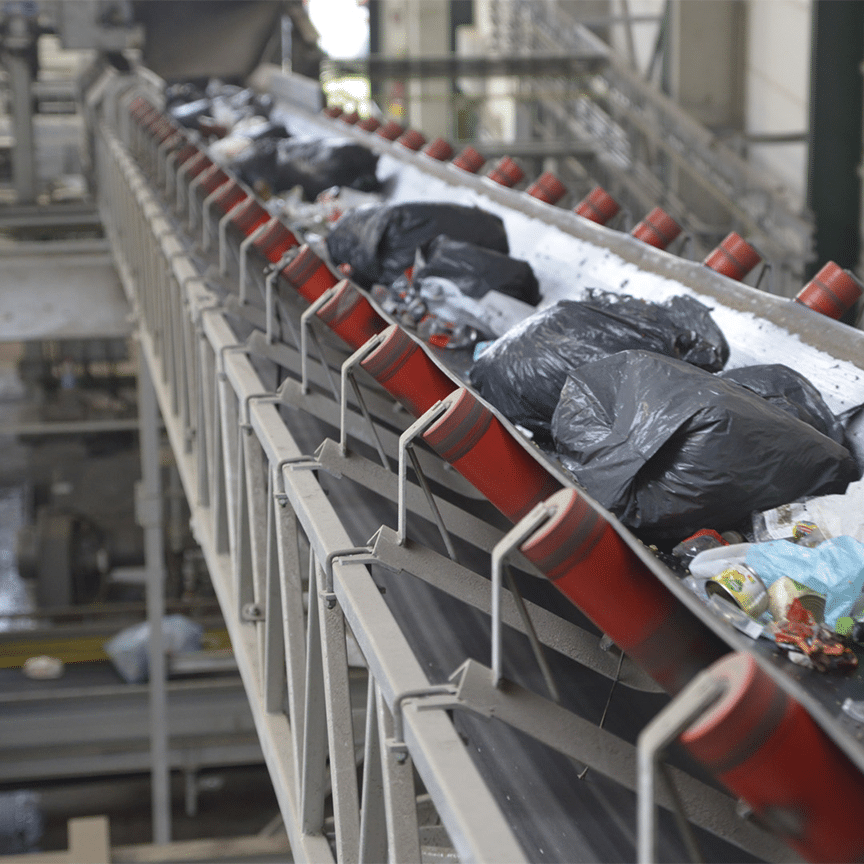
Cost-effective recycling solutions for a circular economy
Recycling is essential to a circular economy, but traditional methods can be complex and expensive. Optical Sorting solutions offer a smarter, more efficient alternative for cities and communities of all sizes, significantly reducing transport and collection costs compared to conventional systems.
Each facility is customised to meet a municipality’s specific needs, with capacity tailored to waste volumes. The system can process a wide range of materials, including food waste, paper, plastic packaging, metal, textiles, newspapers, and both coloured and clear glass.
Optical Sorting is compatible with both pneumatic waste collection systems and manual collection, allowing cities to upgrade their recycling capabilities without replacing existing infrastructure. With this level of flexibility, a tailored solution can be designed for any municipality, regardless of size or waste management needs.
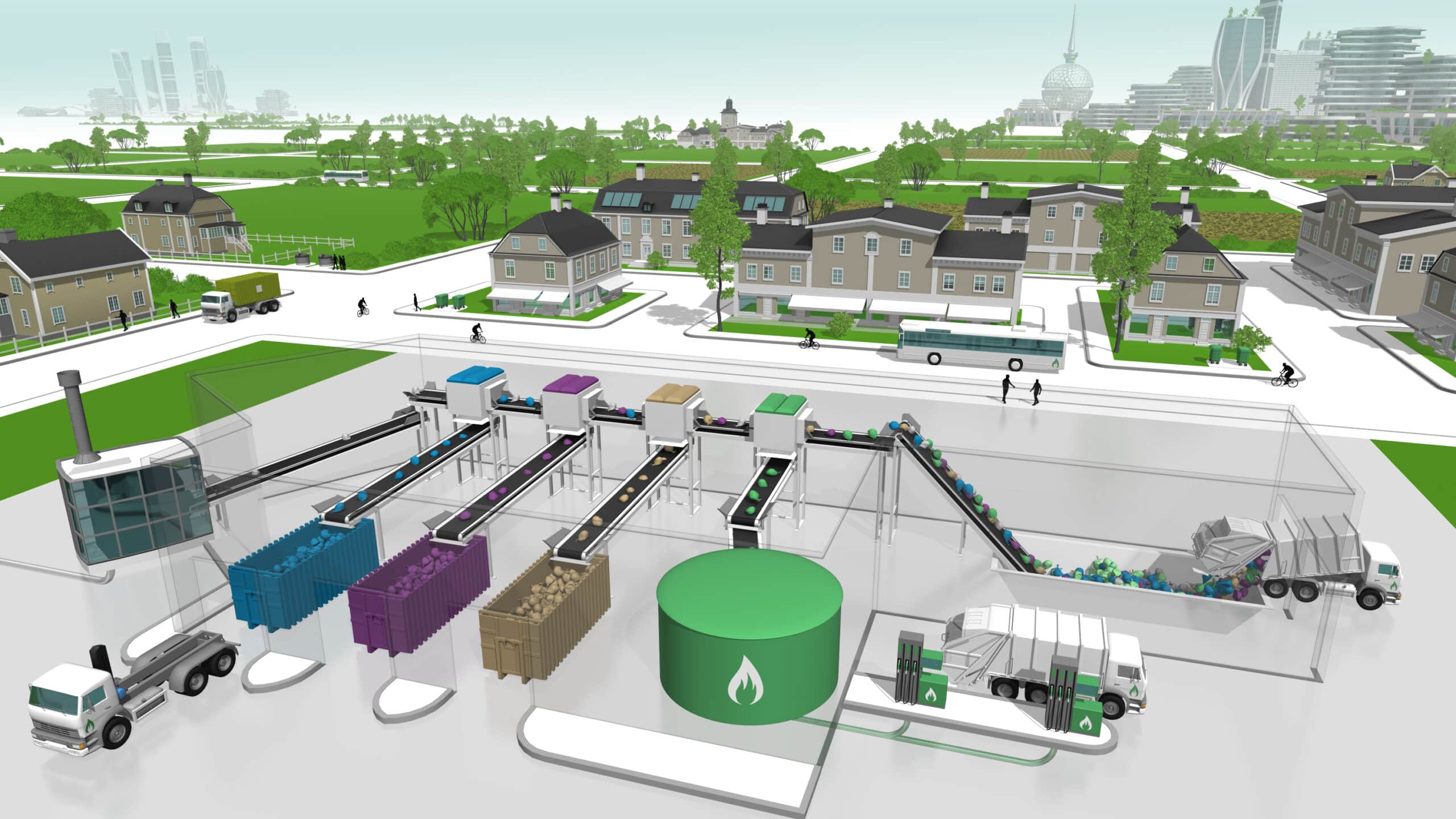
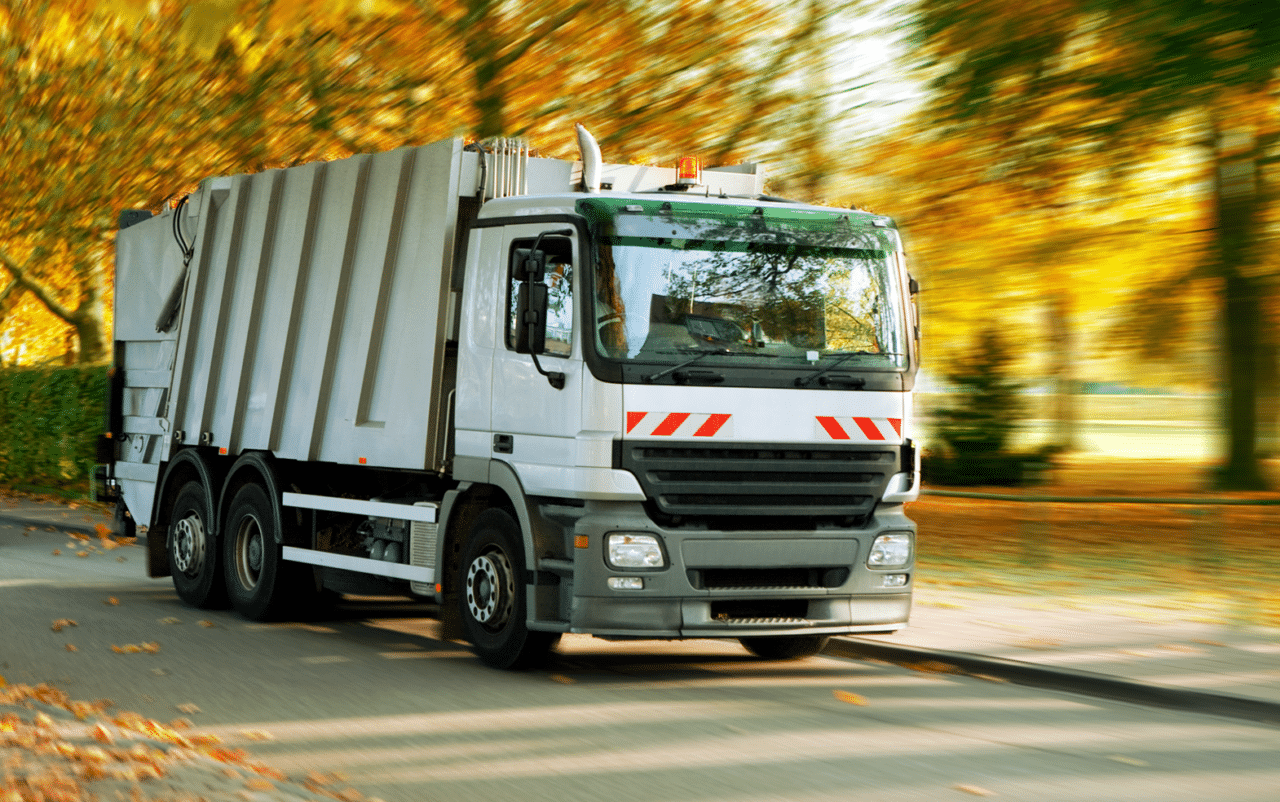
Waste Collection
Envac Sorting can be used with manual collection equipment or with an automated waste collection system. The same sorting plant is used no matter the collection method.

Residual waste
Residual waste, i.e. all waste that cannot be material recycled, is brought to an incineration facility where it used as fuel to produce central heat and power. In countries, where waste incineration is not applied, it is landfilled.
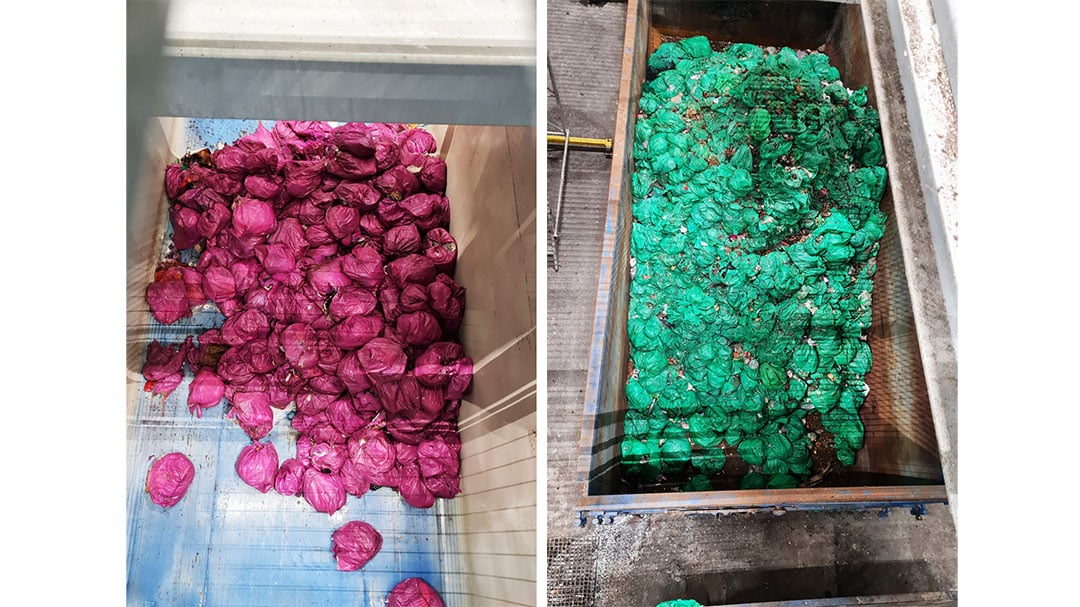
Recycling
At the end of the sorting process, the sorted fractions are collected in a large container. From here they are transported by truck or train to a material recycling facility to they can be brought back into usage.
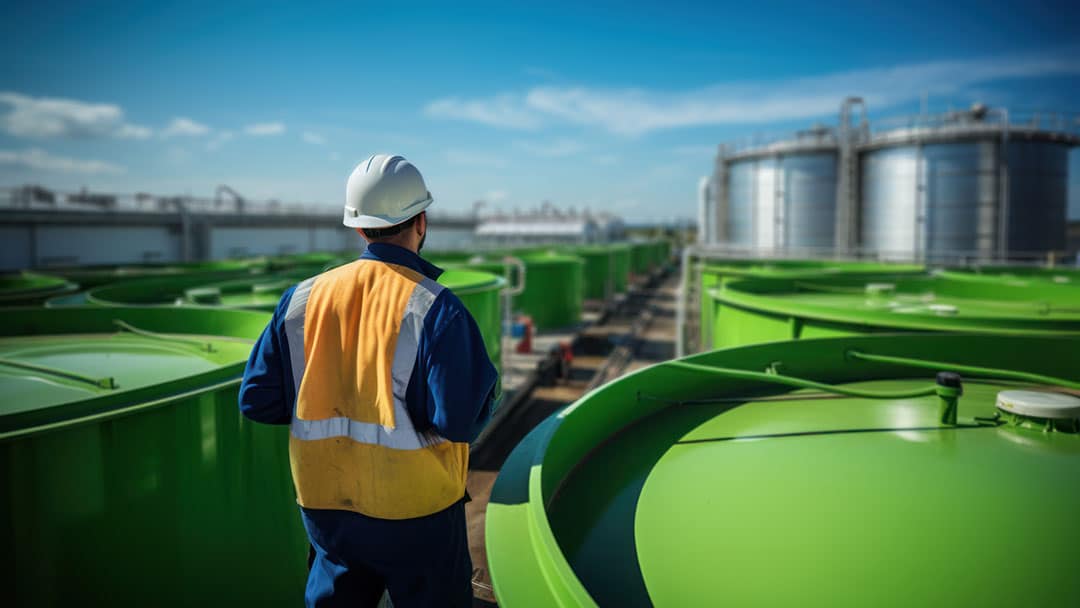
Waste to fuel
Organic waste is transferred to a digetion facility to produce enviromentally friendly bio-methane whitch drives the waste truck. No need for fossil diesel fuel.
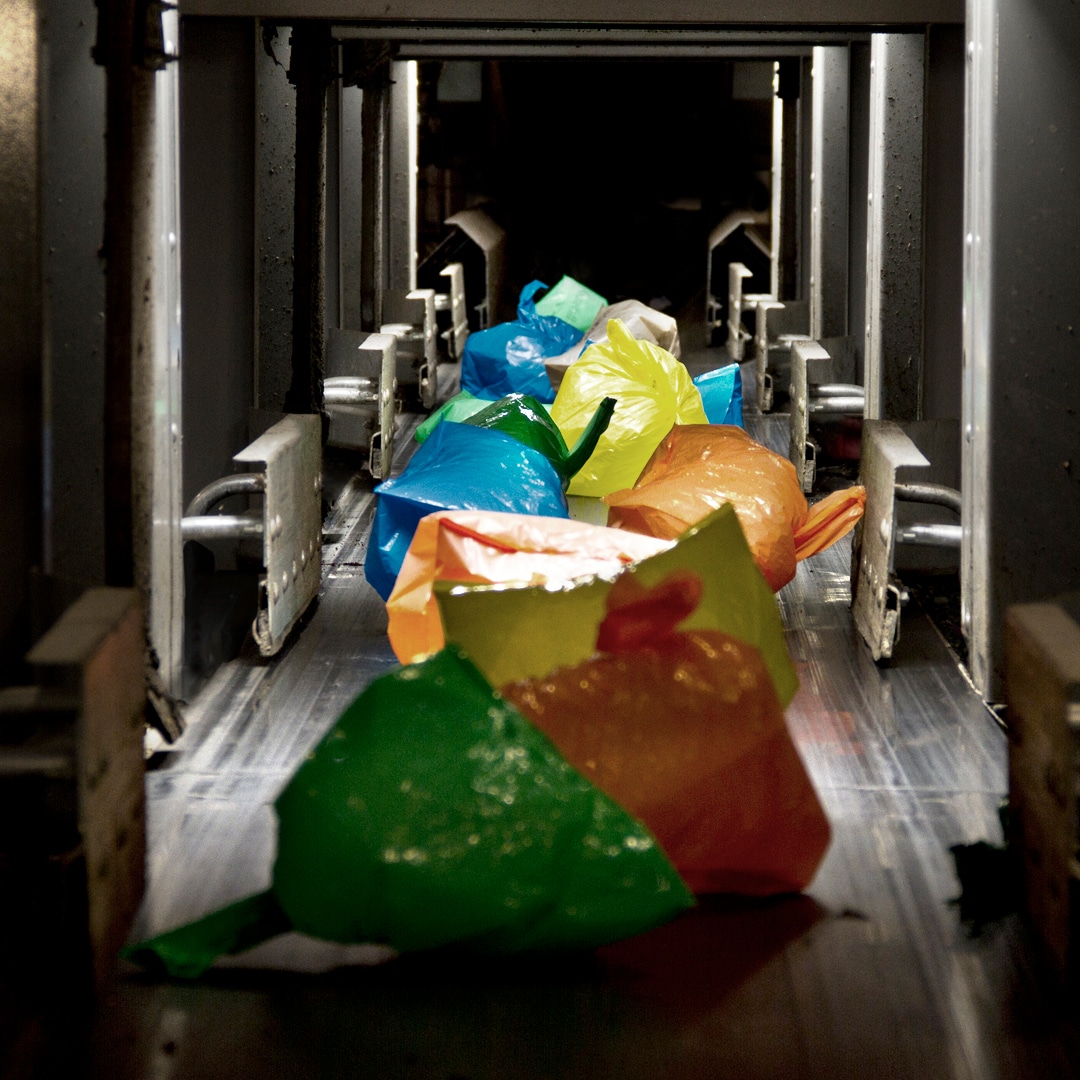
Recycling facility
The bag as are brought to a central recycling facility. From the waste bunker, the bags are transferred via conveyor belts to the optical sorting stations where the bags are separated according to their colour.

Easily maintained
All bags are disposed in the same bin. The bin is emptied using one truck only.
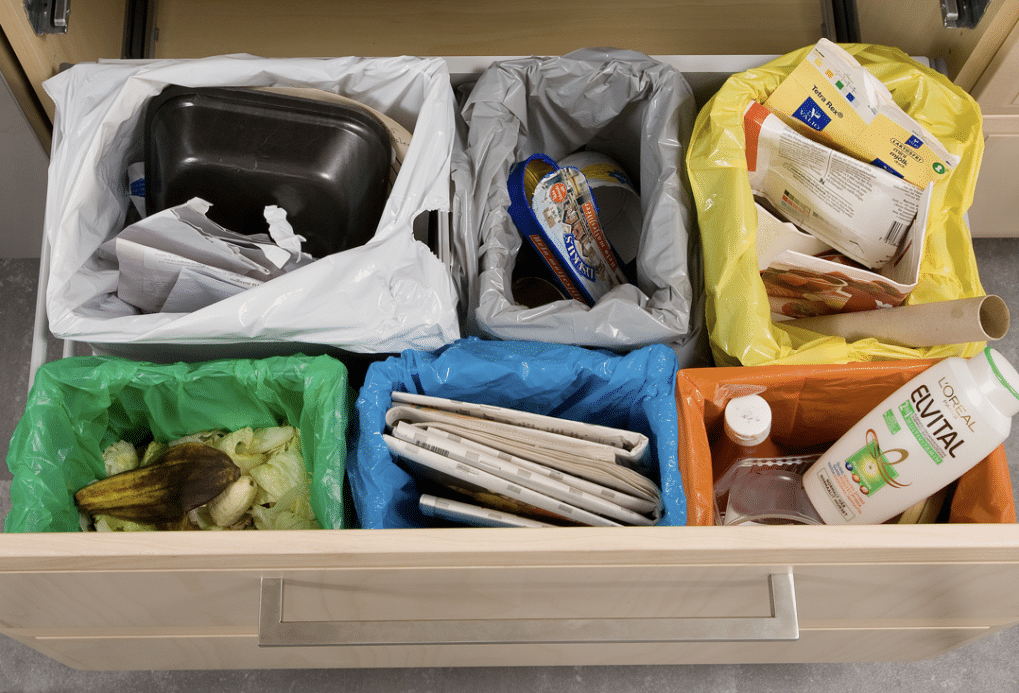
Sorting at home
Households separate their waste into different fractions at home, in bags with different colours. One colour for one fraction.
Key segments for Optical Sorting system
Cities of any size can use Envac Optical Sorting, which can be done either by traditional manual collection or by an automated waste collection system.
Related projects
Optical sorting solutions offer a sustainable and cost-effective waste management option for municipalities of all sizes. Learn more about our various sorting projects and see how cities have made their waste collection smarter.
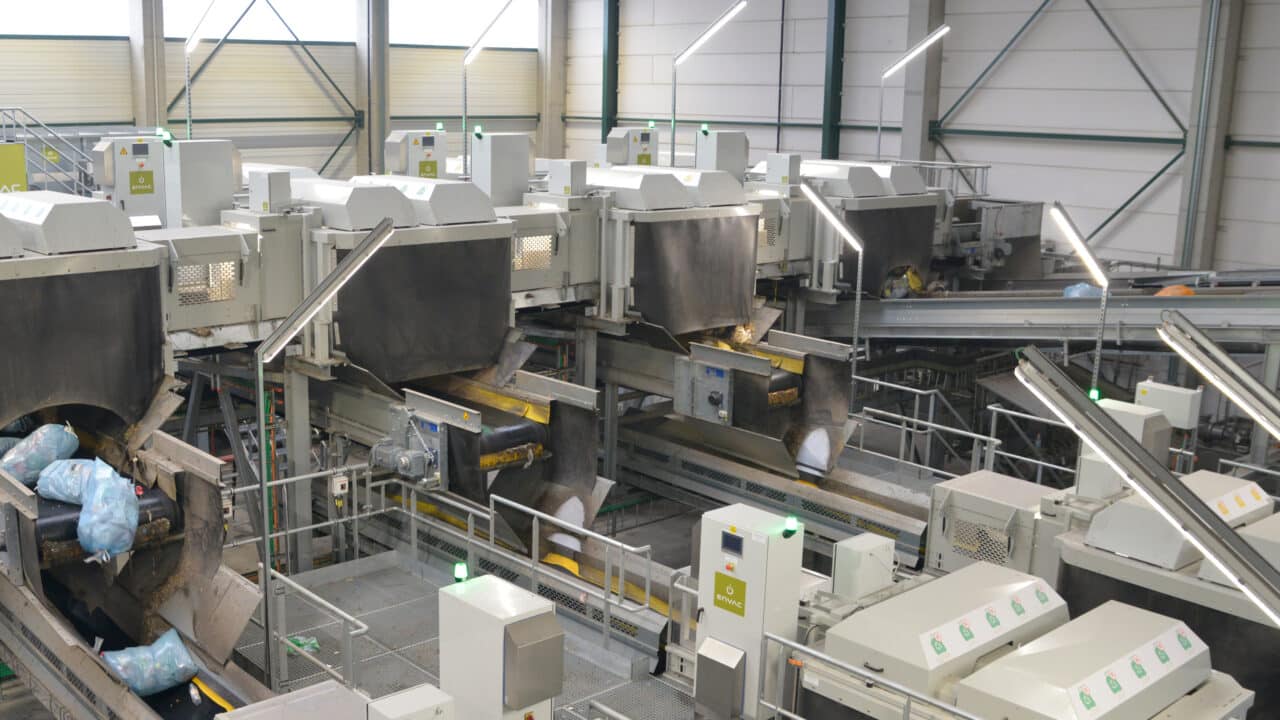
Sorting Biostoom Beringen, Belgium
Limburg Optimo Sorting
The Limburg Optimo Sorting Facility, launched in 2022, serves 32 municipalities and over 300,000 households. It currently sorts five waste fractions: food waste, garden waste, textile waste, residual waste, and plastic/metal packaging. The facility is built to be flexible, with the option to add two more fractions in the future.

Sorting Eskilstuna, Sweden
Eskilstuna
Eskilstuna was early with household waste recycling. With the higher demands of The National Goals the municipality introduced optical sorting. Within only a few months the target of 50% sorted waste was accomplished.
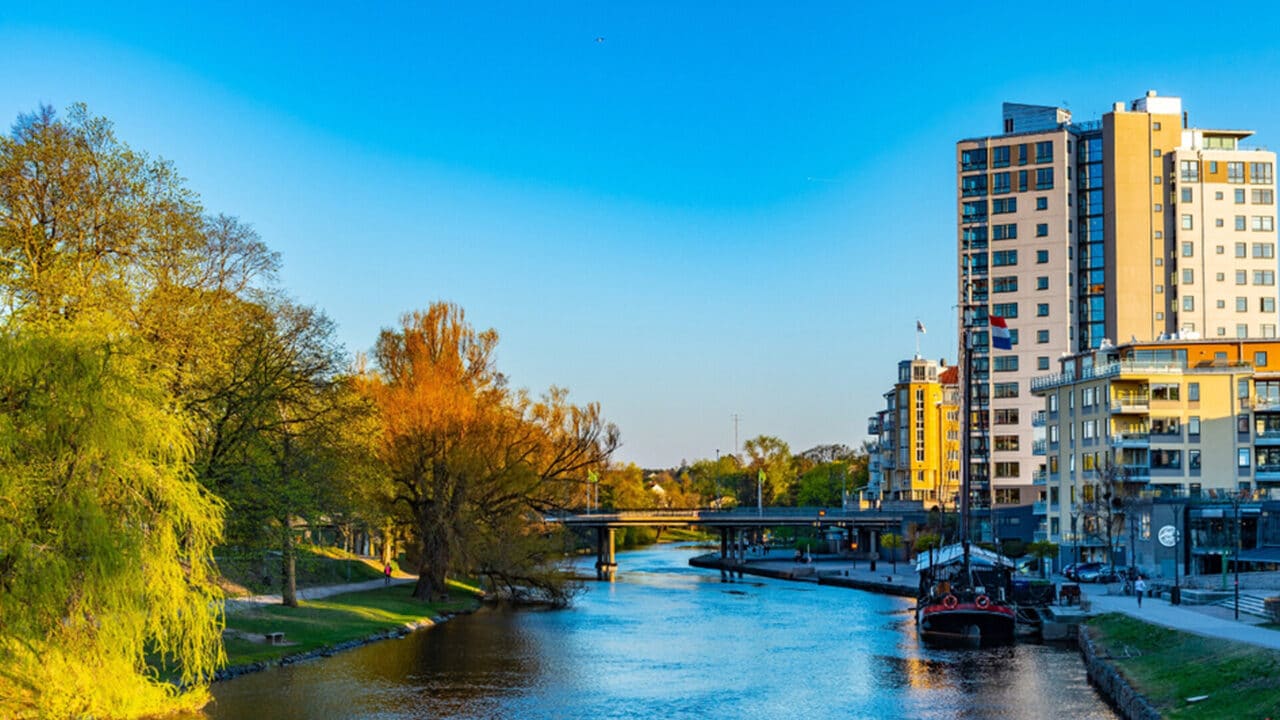
Sorting Linköping, Sweden
Linköping
The target is a region Östergötland without fossil fules in 2030. This was the main political factor for the municipality of Linköping to introduce household collection of food waste using optical sorting.
